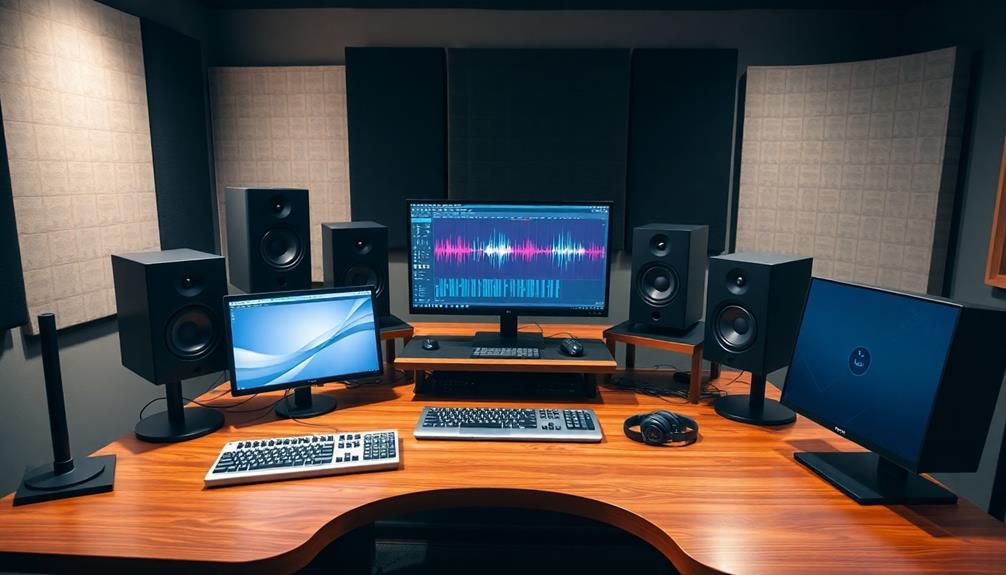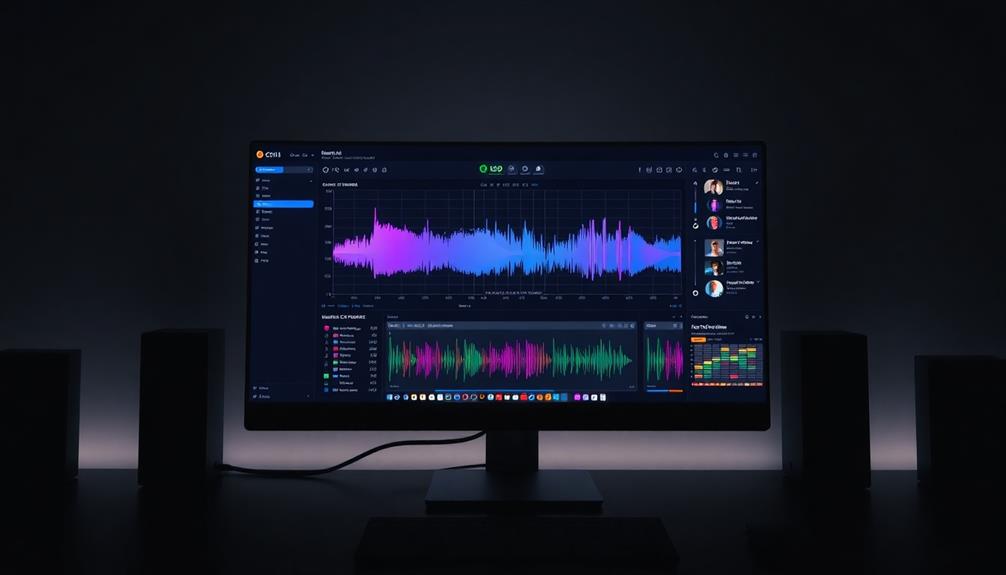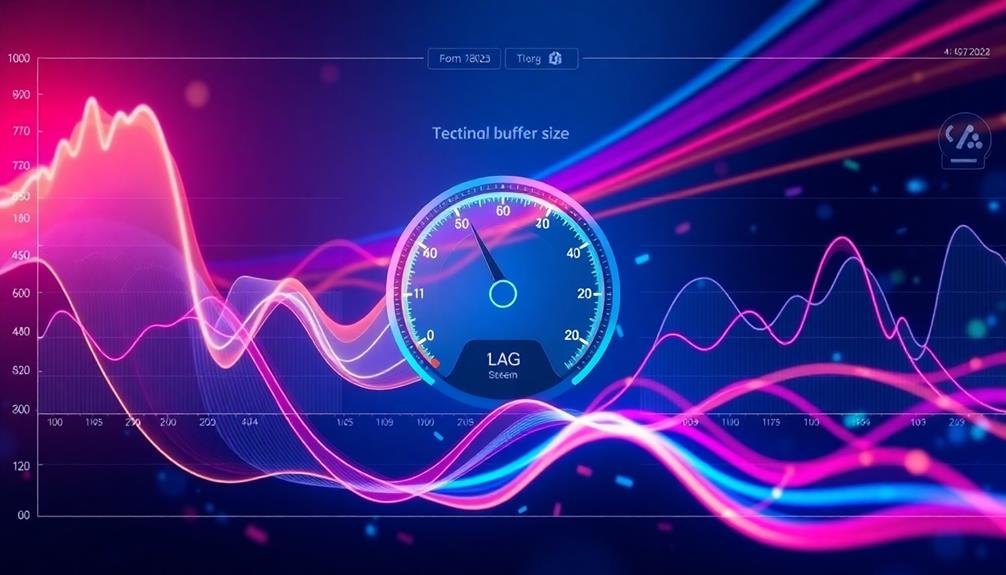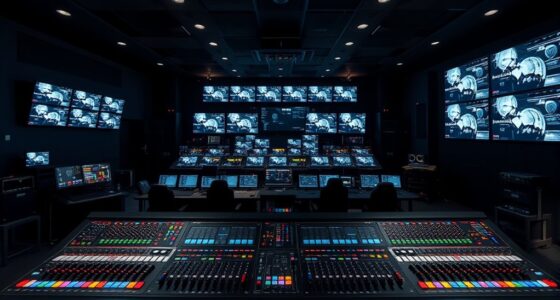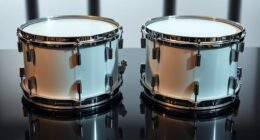To set up a latency-free recording environment, first, lower your buffer size to around 64 or 128 samples during tracking. This reduces the delay you experience while recording. Choose a sample rate like 44.1 kHz to balance audio quality and CPU load. Make sure your system meets your DAW's specifications and keep your audio drivers updated. Disable unnecessary apps running in the background to maximize CPU performance. Each DAW has unique features to help manage latency, so familiarize yourself with these. Stick around to discover more tips tailored specifically for your DAW to enhance your recording experience.
Key Takeaways
- Use low buffer sizes (64 or 128 samples) during tracking to minimize latency and improve real-time audio feedback.
- Select a sample rate of 44.1 kHz for a balance between audio quality and CPU performance, increasing only if hardware allows.
- Regularly update audio drivers and software to prevent latency issues and ensure optimal DAW functionality.
- Disable unnecessary background applications to free up CPU resources for your DAW, enhancing overall recording performance.
- Familiarize yourself with your DAW's specific settings for managing buffer size and latency to optimize your recording setup.
Understanding Latency in Recording
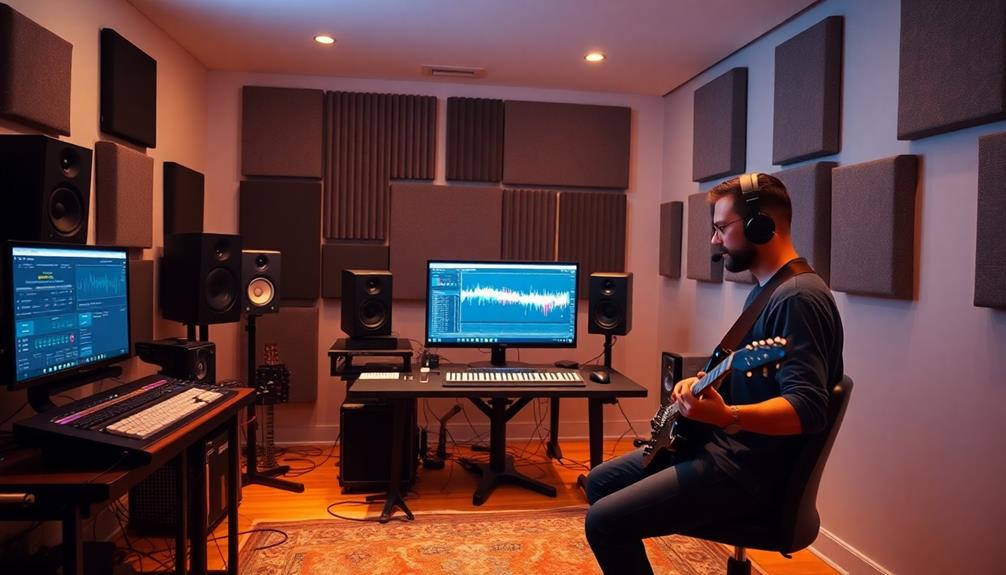
Latency can be a frustrating hurdle in recording, affecting your performance and the quality of your tracks. It refers to the time delay between your audio or MIDI input and the output, becoming noticeable around 20-30 ms. When latency exceeds 200-300 ms, it can markedly disrupt your recording process.
You'll often need to manually align recorded performances, as complete elimination of latency isn't possible, but you can minimize it with the right setup.
Several factors influence latency, including your audio drivers, hardware specifications, buffer size, and sample rate. Adjusting these audio settings plays an essential role in achieving better recording quality and responsiveness.
For instance, reducing the buffer size can help lower latency, but it may increase CPU usage, which could affect performance if your system can't handle it.
To enhance your recording experience, consider utilizing real-time recording solutions like zero-latency monitoring. This feature, often found in modern operating systems, can markedly reduce the perceived delay when tracking.
Understanding and managing latency is vital for effective audio production, as high latency can hinder both your performance and overall recording experience. It is essential to ensure that your system and software are configured to minimize delays, allowing you to achieve seamless real-time audio processing. By optimizing Ableton Live for low latency, you can prevent interruptions and maintain tight synchronization between your input and playback. This involves adjusting buffer sizes, using efficient audio drivers, and streamlining your project to reduce the strain on your computer’s resources.
Optimizing Buffer Size
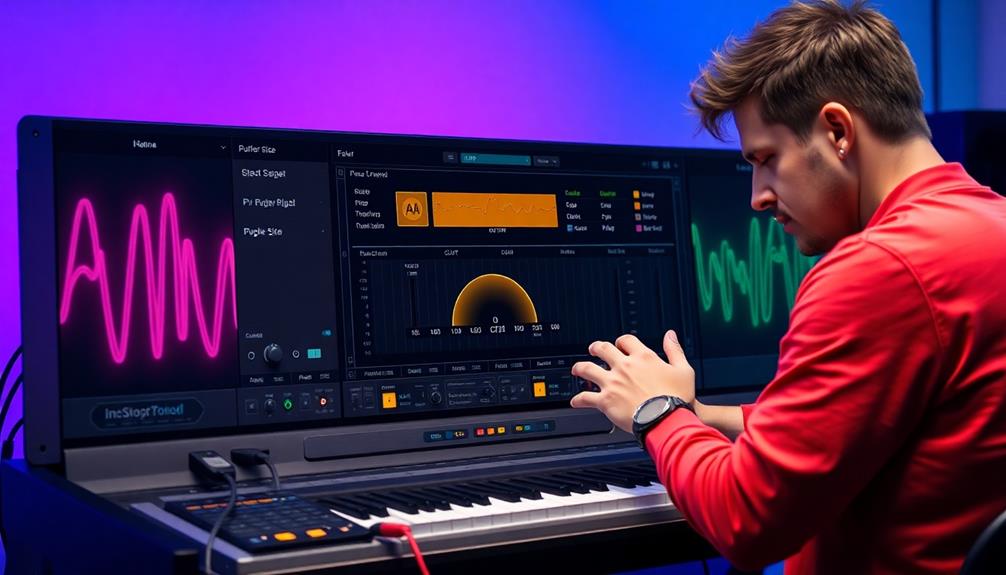
When you're recording, fine-tuning your buffer size is vital for achieving the best performance. A lower buffer size, like 64 or 128 samples, reduces latency, offering immediate audio feedback when tracking live instruments or vocals.
However, you need to balance this with CPU load; smaller buffer sizes increase the demand on your CPU, which might lead to audio dropouts if your system can't keep up.
Most DAWs recommend starting with a buffer size of 256 or 512 samples for mixing. Then, during tracking sessions, drop it down to 64 or 128 samples for peak performance.
Remember, this relationship between buffer size and audio interface sample rate is significant. Lower buffer sizes work better at standard sample rates, such as 44.1 kHz, while higher sample rates, like 96 kHz, require more powerful hardware to maintain performance.
Regularly monitoring and adjusting your buffer settings based on the complexity of your audio production will help you maintain a latency-free recording environment without sacrificing audio quality.
Managing Sample Rate Settings
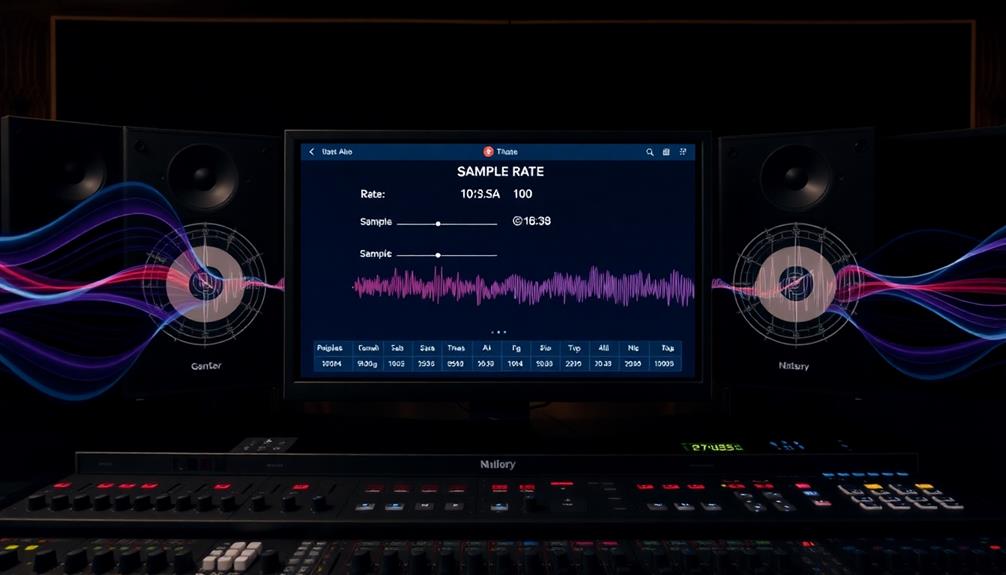
After optimizing your buffer size, it's important to focus on managing your sample rate settings. The sample rate you choose greatly impacts both the quality of your audio and the performance of your DAW. Make certain your audio interface's sample rate matches your DAW's; a common choice is 44.1 kHz for most digital music projects.
While higher sample rates, like 96 kHz or 192 kHz, can enhance audio quality, they also increase CPU load, so evaluate your project's needs before deciding.
Regularly check your DAW's settings in the preferences menu to avoid mismatches that can lead to distortion and other audio performance issues. If you're using multiple audio devices, verify they're all set to the same sample rate to maintain consistency throughout your recording session.
Remember, sample rate can also affect latency; lower rates generally reduce processing demand but may compromise sound quality. Striking the right balance between sample rate and performance is essential for achieving the best possible recording experience.
Tips for System Optimization
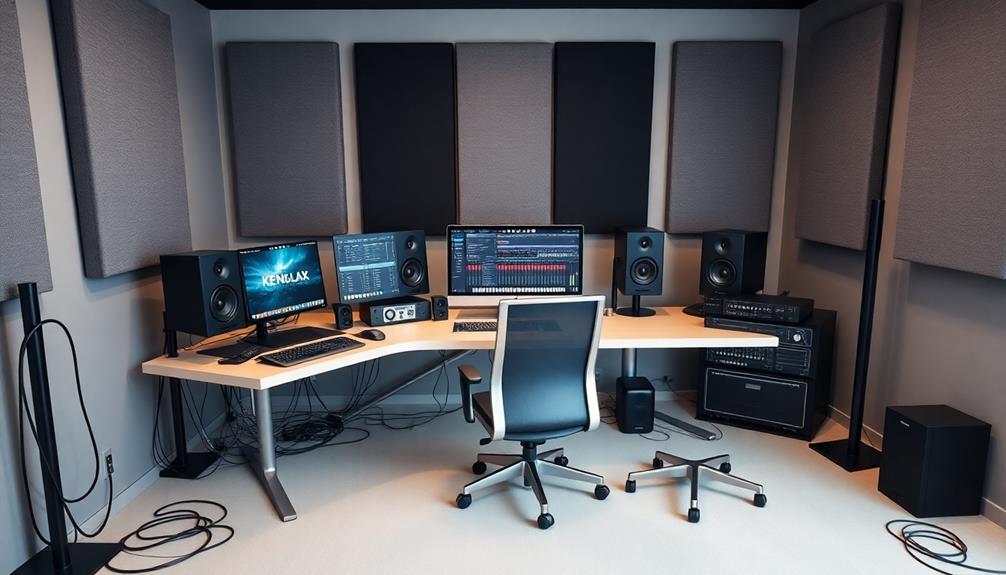
To get the most out of your DAW, optimizing your system is vital. Start by confirming your CPU and RAM meet or exceed your DAW's recommended specifications. Regularly update your audio driver and software; outdated components can create latency issues and hinder your recording experience.
Additionally, consider implementing a high refresh rate monitor for improved visual feedback while recording, much like the benefits seen in top projectors for gaming enthusiasts.
Adjust your buffer size carefully: set it lower (like 64 or 128 samples) during tracking to reduce latency, then increase it (to 512 or 1024 samples) while mixing to free up CPU and system resources.
Disabling unnecessary background apps is essential; this maximizes CPU availability for your DAW, preventing sound dropouts and glitches during recording.
Consider utilizing a dedicated audio interface with optimized drivers designed for low-latency performance. This can greatly enhance responsiveness in your recording setup.
Also, don't forget to switch your computer to high-performance mode to make sure it prioritizes your DAW's needs even more effectively.
DAW-Specific Adjustments and Features
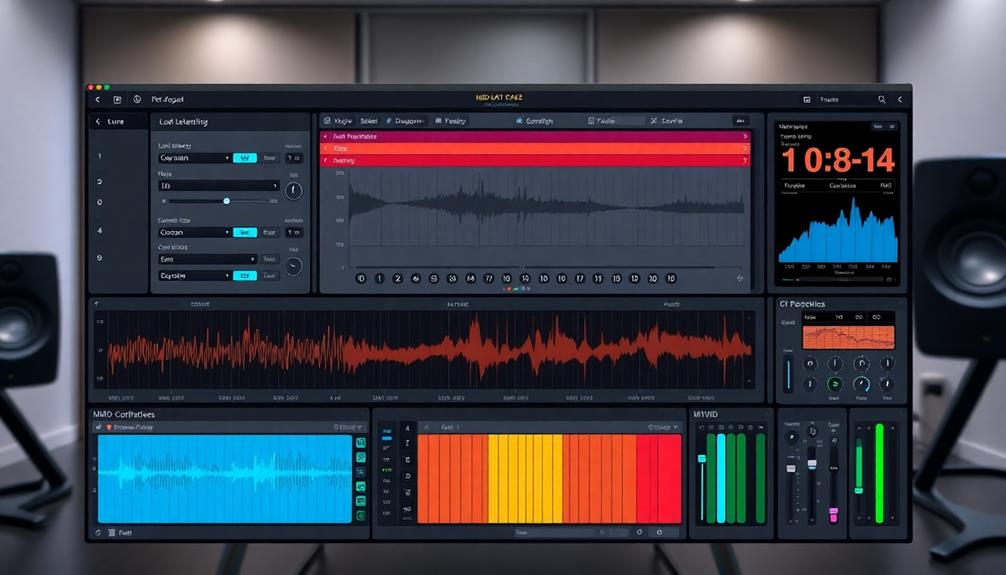
Optimizing your system sets the stage for getting the most out of your DAW, but you'll also want to explore specific adjustments and features unique to your software. Each DAW has its own way of handling buffer size and latency management, so understanding these can greatly enhance your recording experience.
Here's a quick reference for adjusting buffer sizes in popular DAWs:
| DAW | Adjustment Location | Notes |
|---|---|---|
| Ableton Live | Playback Engine | Requires session restart for changes |
| FL Studio | Audio Settings Menu | Select preferred size from dropdown |
| Pro Tools | Setup Tab in Playback Engine | Tailor latency for recording vocals |
In Cubase, you can access buffer size through the Device Setup menu, enabling adjustments for your audio devices. For Bitwig, check Preferences under the Options menu for flexible performance tuning. Remember, using CPU-intensive effect plugins may require you to adjust your buffer size to maintain peak performance while recording. By tailoring these settings, you can guarantee a smoother and more efficient recording process.
Frequently Asked Questions
How to Reduce Latency on DAW?
To reduce latency on your DAW, lower your buffer size, guarantee consistent sample rates, use direct monitoring, update your software, and close unnecessary apps. These steps can greatly enhance your recording experience.
Which DAW Is Best for Latency?
Imagine trying to shoot a basketball through a hoop while it's constantly moving. For low-latency DAWs, Ableton Live often shines, but Pro Tools and Logic Pro X also excel. Choose what fits your workflow best!
How Can I Reduce Latency Without Audio Interface?
To reduce latency without an audio interface, update your audio drivers, lower your buffer size, close unnecessary applications, and explore direct monitoring options. These steps can greatly improve your recording experience and reduce delays.
What Is Acceptable Latency in a DAW?
Acceptable latency in a DAW usually ranges from 10 to 20 milliseconds. If it exceeds 30 milliseconds, you'll notice delays that can disrupt your performance. Aim for lower latency for a more natural recording experience.
Conclusion
By implementing these latency-free recording tips, you can greatly enhance your recording experience. Many believe that achieving zero latency is impossible, but with the right settings and optimizations, you can get remarkably close. Adjusting your buffer size, managing sample rates, and fine-tuning your DAW can lead to smoother recordings. So, don't let latency hold you back—experiment with these strategies and see how they transform your workflow. You might just be surprised by the results!

